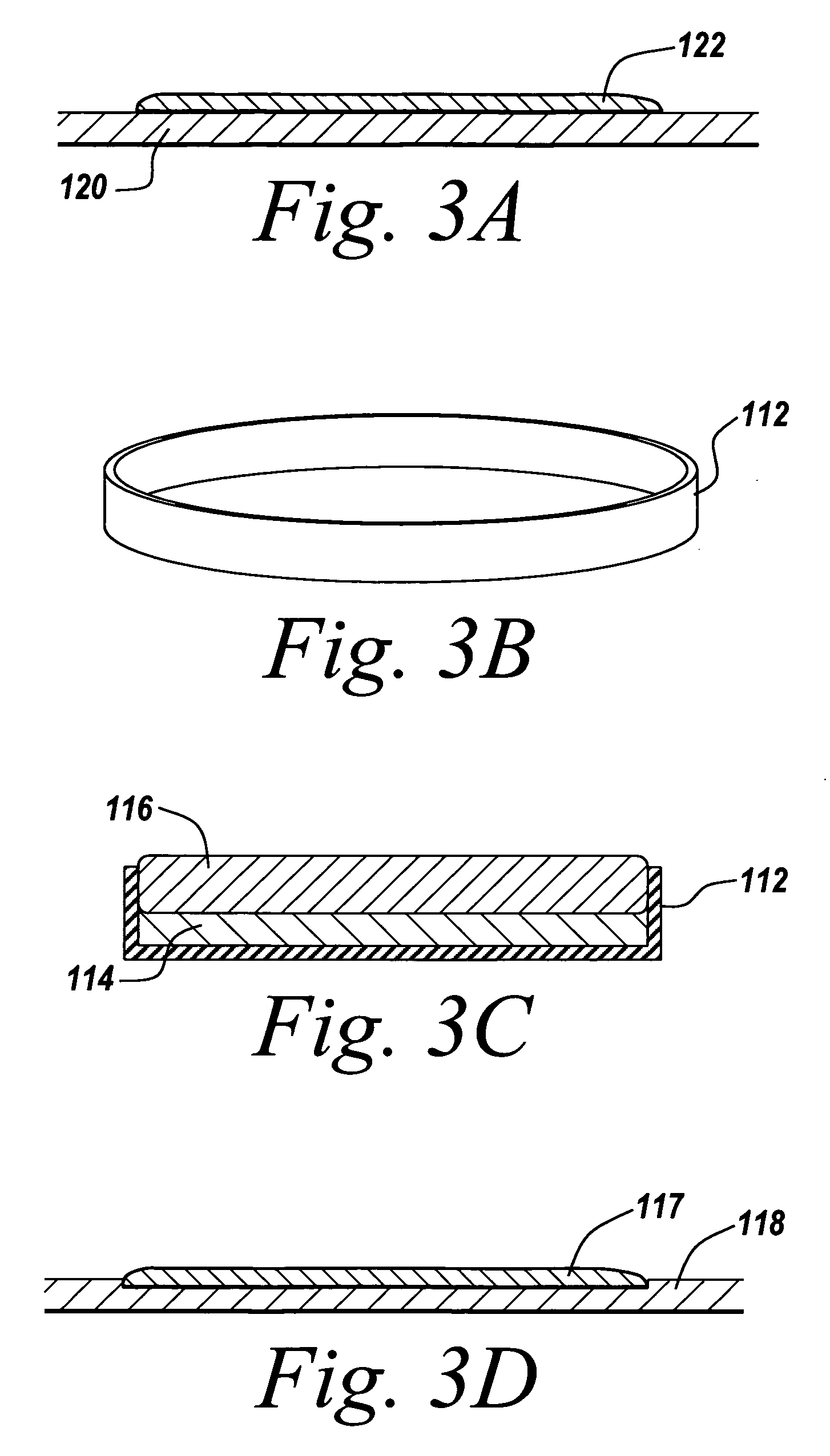Stand-alone film and methods for making the same
a stand-alone film and film technology, applied in the field of stand-alone films, can solve the problems of reducing effectiveness, pain and infertility, serious postoperative complications, etc., and achieve the effect of maintaining anti-adhesive properties
- Summary
- Abstract
- Description
- Claims
- Application Information
AI Technical Summary
Benefits of technology
Problems solved by technology
Method used
Image
Examples
loading example # 1
DRUG LOADING EXAMPLE #1
[0085] One example of using drug loading was demonstrated by using Cyclosporine. Pure fish oil was heated at 200° F. to obtain a viscosity of 15,000-20,000 cps at 24° C. to form a pre-treated or pre-thickened fish oil. 3.1 g of the pre-treated or pre-thickened fish oil is then mixed with 64.6 mg of Cyclosporine A (CSA). The mixture was then heated to 150° F. for 20 minutes to allow the CSA to dissolve in the fish oil. This resulted in a 2.0% CSA in fish oil formulation by weight. After heating, the mixture was cast onto a Teflon mat with a casting knife to form a thin film. The thin film was then placed under a UV lamp for 15 minutes. The UV lamp had a power of 15 watts and emitted UV light with a 254 nm wavelength. After exposure to UV light, the thin film was heated in an oven at 200° F. for 24 hours, after which the thin film was removed from the oven and allowed to cool for 1 hour. After the thin film was cooled, it was peeled from the Teflon mat to form a...
example # 1
[0086] An example of using drug coating was demonstrated by overlaying a drug-loaded fish oil on a stand-alone film. Pure fish oil was heated at 200° F. to obtain a viscosity greater than 100,000 cps at 24° C. to form pre-cured fish oil. 3.33 g of pre-cured fish oil was mixed with 71.1 mg of CSA to form a mixture. This resulted in a 2.1% CSA in fish oil formulation by weight. After the CSA was solubilized in the pre-cured fish oil, the mixture was brushed onto a 1″ by 1½ piece of stand-alone film. The film with the drug coating was then heated at 125° F. for 64 hours. Drug extraction and dissolution were performed on the film by HPLC. The extraction result shows a CSA load of 3.2 mg on a 1″ by 1½″ sample. FIG. 8 shows the dissolution results. In general, the dissolution results showed that CSA was released in an approximately linear fashion as a function of time.
example # 2
[0087] Another example of drug coating was demonstrated by using the polyionic LBL technique. A coating of Marcaine was added to a piece of stand-alone film by applying a polyelectrolyte coating (LBL) on a 1″ by 1½″ of stand-alone film. The cationic component was 0.01M polyethylene amine (PEI) while the anionic component was 0.01M poly acrylic acid (PAA). A 10-layer system was added to the stand-alone film beginning with PEI and ending with PAA, with a 5-minute soak for each component followed by a deionized water rinse. 103.2 mg of Marcaine was added to 3.5 ml of water to form a 29.5 mg / ml Marcaine solution. The stand-alone film was then dipped into the Marcaine solution for 5 minutes and allowed to air dry.
PUM
| Property | Measurement | Unit |
|---|---|---|
| thickness | aaaaa | aaaaa |
| temperature | aaaaa | aaaaa |
| temperature | aaaaa | aaaaa |
Abstract
Description
Claims
Application Information
 Login to View More
Login to View More - R&D
- Intellectual Property
- Life Sciences
- Materials
- Tech Scout
- Unparalleled Data Quality
- Higher Quality Content
- 60% Fewer Hallucinations
Browse by: Latest US Patents, China's latest patents, Technical Efficacy Thesaurus, Application Domain, Technology Topic, Popular Technical Reports.
© 2025 PatSnap. All rights reserved.Legal|Privacy policy|Modern Slavery Act Transparency Statement|Sitemap|About US| Contact US: help@patsnap.com



